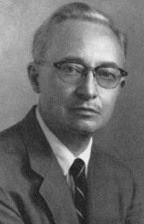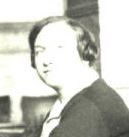Alberta Lucille Hart was raised in rural Oregon by her mother and by a step-father that she did not much like. From an early age she expressed desires for male clothing and considered herself as the man of the family (her father being dead). She also developed an aversion for female chores such as cooking and sowing. As a teenager she developed crushes on the family's maid and on female teachers at school. She was an outstanding student and was prominent in the debating society.
At eighteen she went to a local college and started an affair with Eva Cushman, a fellow student. Alberta provided the money for Eva, who otherwise could not afford it, to go with her to Albany College, Oregon (now
Lewis and Clarke College). Alberta took up smoking, drinking and attending fast cafés, and had affairs with women. She spent the summer vacations working as a commercial photographer in the mountains dressed as a man. All this strained the relationship with the conventional Eva.

The high living left Alberta in some debt and only with the financial assistance of one of her other lovers that she was able to go to medical school. The only woman in her class, Alberta graduated from the University of Oregon Medical Department in Oregon (now the
Oregon Health Sciences University School of Medicine) in 1917 with the highest honors in her class.
Also in 1917 she consulted a physician-psychiatrist, Dr J. Allen Gilbert of Portland, Oregon about her phobia of loud noises which may have been caused by her hated stepfather's use of a pop-gun. Dr Gilbert established that her real problem was connected with her sex. He had initially tried hypnosis to get her to accept a conventional female role, but she had refused to continue in that. In February 1918, using the name Robert Allen Bamford, Jr. Hart married Inez Stark in California. She requested a hysterectomy from Dr Gilbert, and the operation was done late in 1918. This is a remarkably early cooperation of a doctor to supply as much of a sex change operation as then technically feasible. Dr Gilbert published an account of his patient, referred to as 'H' in
Journal of Nervous and Mental Disease in 1920.
Alan Hart, M.D. applied for and obtained a hospital appointment. He made good in this position until a chance encounter with a former colleague led to him being hounded out of the job. Inez Stark left him in 1923, and they were divorced in 1925.
Later that year he married Edna Ruddick, a school teacher who became a social worker and administrator. Dr Hart was able to obtain a positions in Montana, New Mexico, Illinois, Washington State and Idaho. He specialized in roentgenology, X-rays. He did a Masters degree in radiology from the University of Pennsylvania in 1930, and a Masters degree in public health from Yale in 1948. In 1938 he became
Tuberculosis Consultant to the Idaho State Department of Public Health, and in 1943 served with a army induction center reading chest X-rays. Also in 1943 he published
These Mysterious Rays
, a popular account of X-rays and radiation treatment. From 1946 he was head of the X-ray programs in Connecticut.
Alan Hart was also a novelist. In 1935 saw his first novel
Doctor Mallory, a tale of a doctor fighting poverty and ignorance in a Oregon fishing village. In 1936 he published
The Undaunted, about a doctor who is hounded from place to place because of his homosexuality. This drew upon Hart's own experiences and the doctor was portrayed as an X-ray technician. He followed this in 1937 with
In the Lives of Men about life and oppression in a lumber town. His last published novel was
Dr Finlay Sees It Through about a struggle for health insurance. The reviewer for
Saturday Review wrote of
In the Lives of Men: “...for a doctor, he seems to know surprisingly little of women. His portraits of them are little more than profile sketches. Those he approves are colorless and negative, the others incredibly cold and selfish."
Alan died of heart disease at the age of 72. His will specified that he be cremated and that ‘no memorial be erected or created’. Edna lived another 20 years. They left a trust to the Oregon Health Sciences Foundation for research grants in the field of leukemia.
Jonathan Katz in his
Gay American History, 1972, wrote of Hart’s hysterectomy as an example of unneeded medical mutilation forced on a lesbian. Gay/lesbian historians were unable to interview Edna in that they persistently alienated her by thinking of her husband and thus herself as lesbians. More recently Katz has said that he would not use the same language today.
In 1984, The
Right to Privacy Political Action Committee in Oregon established an annual “Lucille Hart Dinner”. This event was attended by Portland’s liberal elite, gay and straight both, and regularly raised more than $100,000 for charities. This of course in defiance of his chosen name, gender and the wishes in his will.
This continued until
Kay Brown with the aid of the Portland branch of the
Lesbian Avengers organized protests in 1995 to get the event renamed. As
Right to Privacy renamed itself to
Right to Pride, the event was renamed the “Right to Pride Dinner”.
Right to Pride dissolved in 1999, but the dinner was taken over by
Basic Rights Oregon, which called it the “Hart Dinner”, but they still could not let go of the female pronouns.
*Not the Controller of BBC1, nor the BBC writer on the Middle East.
Alan Hart's publications:
Doctor Mallory , 1935
, 1935
The Undaunted, 1936
In the Lives of Men, 1937
Dr Finlay Sees It Through , 1942
, 1942
These Mysterious Rays , 1943
, 1943
- Joshua Allen Gilbert. “Homosexuality and its Treatment”. Journal of Nervous and Mental Disease 52, 4. Oct 1920: 297-322. Identified the patient only as ‘H’. The article is a mix of the patient’s and the doctor’s writing. In line with the practice of the time, the patient’s condition is labeled ‘homosexuality’.
- Jonathan Ned Katz. “1918-20: Dr J. Allen Gilbert; ‘Homosexuality and Its Treatment’ “. Gay American History: Lesbians and Gay Men in the U.S.A., Thomas Y. Crowell Co. 1976, revised edition 1992: 390-422. Credited as the first researcher to realize that Gilbert’s ‘H’=Alan Hart, but much criticized for declaring that Hart was a lesbian.
- Jonathan Ned Katz. “1936, April 12: Dr. Alberta Lucille/Alan Hart: The Undaunted”. Gay/Lesbian Almanac: A New Documentary
 , Harper & Row Publishers, Inc. 1983, Carrol & Graf Publishers, Inc. 1994: 516-22.
, Harper & Row Publishers, Inc. 1983, Carrol & Graf Publishers, Inc. 1994: 516-22.
- Bair Henry, "Lucille Hart Story" and Brian Booth "Alan Hart: A Literary Footnote" in Right to Privacy Ninth Annual Lucille Hart Dinner Booklet. October 6, 1990.
- Gerard Koskovich, "Private Lives, Public Struggles", Stanford, Vol. 21, No. 2. June 1993.
- Janet Miller and Judith Schwartz, "Lesbian Physicians Sideshow", created for American Association of Physicians for Human Rights Conference, Portland, Oregon. August 19, 1993.
- Thomas M. Lauderdale and Tom Cook, "The Incredible Life and Loves of the Legendary Lucille Hart", Alternative Connection Vol. 2, Nos. 12 and 13. September and October 1993.
- Tom Bates, "Decades ago, an Oregon Doctor Tried to Define Gender"" The Oregonian. July 14, 1996.
- Ken Morris and Kay Brown. “The Alan Lucill Hart Story”. Transsexual, Transgender, and Intersex History. 1998-2000. Archive.
- Kay Brown. “Stolen History – Secret Lives”. Transsexual, Transgender, and Intersex History. 1998-2000. Archive.
- Brian Booth. “Alberta Lucille Hart / Dr. Alan L. Hart: An Oregon ‘Pioneer’”. Oregon Cultural Heritage Commission. 2000. www.ochcom.org/hart.
- Margaret Deidre O’Hartigan. “Alan Hart” in Dean Kotula. The Phallus Palace: Female to Male Transsexuals. Alyson Books 253 pp 2002: 157-166.
___________________________________________________________________
There is no mention of a mastectomy. It was probably done by a doctor other than Dr Gilbert and therefore is not mentioned in his writeup. Of course male hormones were not available in 1917. However Hart was a doctor, and one presumes that he would probably self prescribe in later decades.
 mosexuality is a reparative drive to repair this lack of affection. She advocates homosocial bonding instead. She implies that gay activists are basically dishonest.
mosexuality is a reparative drive to repair this lack of affection. She advocates homosocial bonding instead. She implies that gay activists are basically dishonest.























